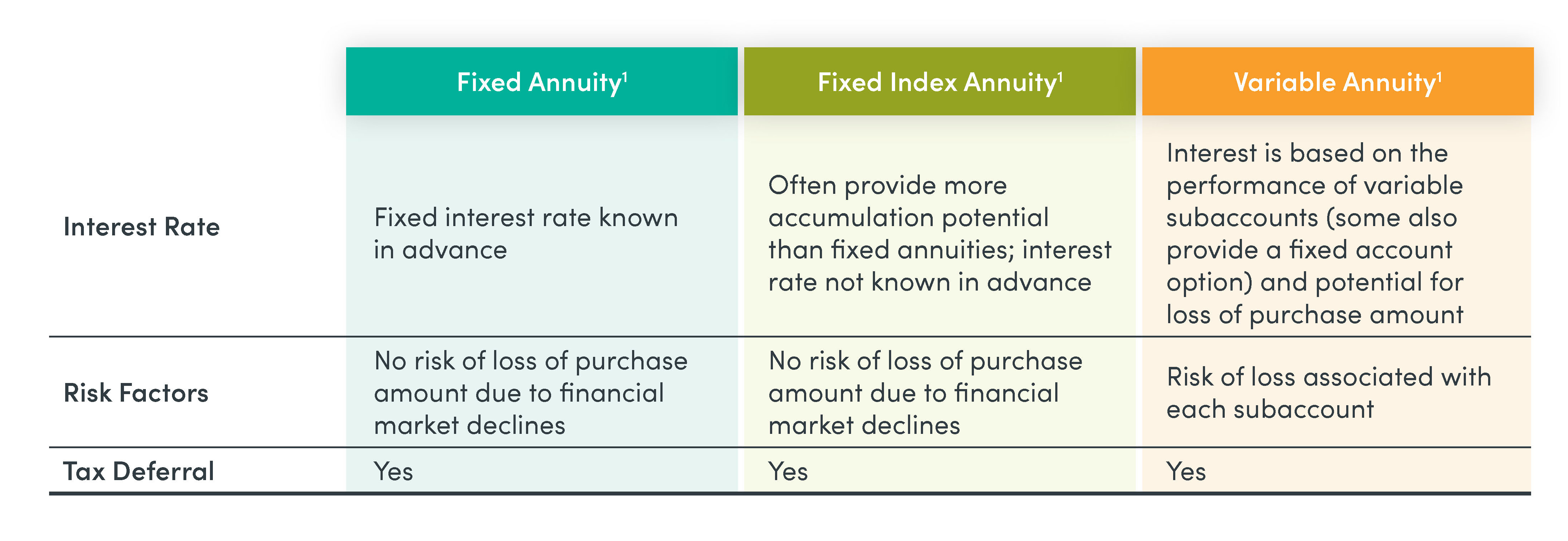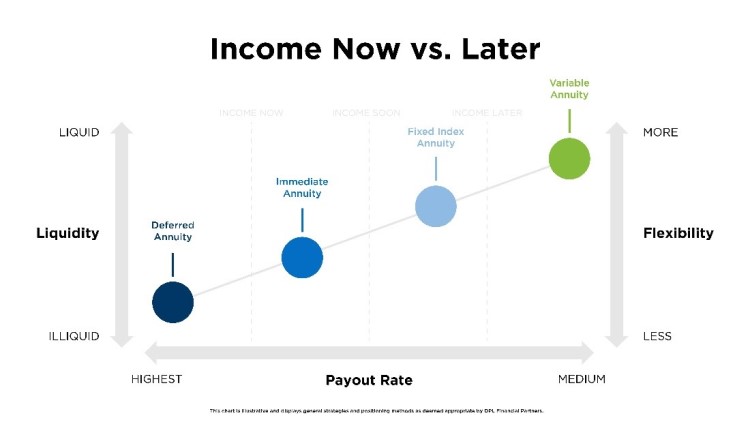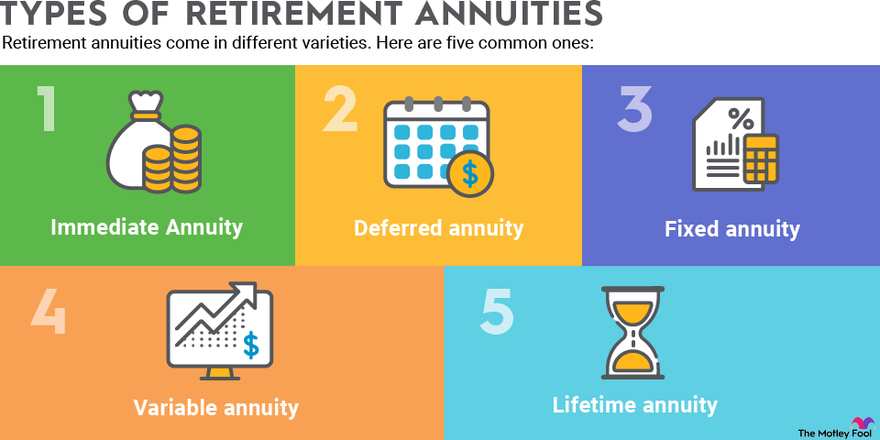All Categories
Featured
Table of Contents
Simply as with a fixed annuity, the proprietor of a variable annuity pays an insurance provider a round figure or collection of payments in exchange for the pledge of a collection of future settlements in return. However as stated over, while a taken care of annuity expands at an assured, continuous rate, a variable annuity expands at a variable price that depends upon the efficiency of the underlying financial investments, called sub-accounts.

Throughout the build-up stage, assets bought variable annuity sub-accounts grow on a tax-deferred basis and are tired only when the agreement owner withdraws those incomes from the account. After the buildup phase comes the income phase. Gradually, variable annuity assets ought to theoretically enhance in value till the agreement owner determines she or he would love to begin withdrawing cash from the account.
The most significant issue that variable annuities commonly existing is high cost. Variable annuities have several layers of fees and expenditures that can, in aggregate, create a drag of up to 3-4% of the contract's worth every year. Below are the most typical fees related to variable annuities. This expenditure makes up the insurer for the danger that it thinks under the regards to the agreement.
Breaking Down Your Investment Choices Key Insights on Your Financial Future Defining the Right Financial Strategy Benefits of Choosing the Right Financial Plan Why Choosing the Right Financial Strategy Is Worth Considering Immediate Fixed Annuity Vs Variable Annuity: A Complete Overview Key Differences Between Fixed Annuity Vs Variable Annuity Understanding the Risks of Variable Vs Fixed Annuity Who Should Consider Strategic Financial Planning? Tips for Choosing the Best Investment Strategy FAQs About What Is Variable Annuity Vs Fixed Annuity Common Mistakes to Avoid When Choosing Fixed Index Annuity Vs Variable Annuity Financial Planning Simplified: Understanding Variable Annuity Vs Fixed Indexed Annuity A Beginner’s Guide to Variable Annuity Vs Fixed Annuity A Closer Look at Annuities Fixed Vs Variable
M&E expenditure costs are determined as a portion of the agreement worth Annuity issuers pass on recordkeeping and various other management prices to the agreement proprietor. This can be in the form of a flat yearly cost or a percentage of the contract worth. Administrative fees might be included as part of the M&E danger cost or may be assessed separately.
These costs can vary from 0.1% for passive funds to 1.5% or even more for actively taken care of funds. Annuity contracts can be customized in a number of means to offer the details needs of the contract proprietor. Some common variable annuity motorcyclists consist of assured minimal buildup benefit (GMAB), guaranteed minimum withdrawal advantage (GMWB), and assured minimum revenue benefit (GMIB).

Variable annuity payments supply no such tax deduction. Variable annuities often tend to be extremely ineffective lorries for passing riches to the next generation because they do not appreciate a cost-basis modification when the original contract owner passes away. When the proprietor of a taxable financial investment account passes away, the expense bases of the financial investments kept in the account are gotten used to mirror the market prices of those investments at the time of the proprietor's death.
Understanding Fixed Indexed Annuity Vs Market-variable Annuity A Closer Look at Tax Benefits Of Fixed Vs Variable Annuities Breaking Down the Basics of Investment Plans Pros and Cons of Various Financial Options Why Variable Annuities Vs Fixed Annuities Matters for Retirement Planning How to Compare Different Investment Plans: A Complete Overview Key Differences Between Different Financial Strategies Understanding the Rewards of Long-Term Investments Who Should Consider Strategic Financial Planning? Tips for Choosing What Is Variable Annuity Vs Fixed Annuity FAQs About Planning Your Financial Future Common Mistakes to Avoid When Choosing Fixed Index Annuity Vs Variable Annuities Financial Planning Simplified: Understanding Annuities Fixed Vs Variable A Beginner’s Guide to Variable Annuities Vs Fixed Annuities A Closer Look at How to Build a Retirement Plan
Heirs can acquire a taxable investment portfolio with a "tidy slate" from a tax viewpoint. Such is not the case with variable annuities. Investments held within a variable annuity do not receive a cost-basis adjustment when the original owner of the annuity dies. This implies that any type of gathered unrealized gains will certainly be passed on to the annuity proprietor's beneficiaries, along with the connected tax problem.
One substantial issue connected to variable annuities is the possibility for problems of passion that may exist on the part of annuity salespeople. Unlike an economic expert, who has a fiduciary obligation to make investment decisions that benefit the customer, an insurance policy broker has no such fiduciary obligation. Annuity sales are very lucrative for the insurance experts who offer them as a result of high ahead of time sales commissions.

Many variable annuity contracts contain language which places a cap on the portion of gain that can be experienced by particular sub-accounts. These caps prevent the annuity owner from totally getting involved in a section of gains that can or else be appreciated in years in which markets create significant returns. From an outsider's viewpoint, presumably that financiers are trading a cap on financial investment returns for the aforementioned assured floor on financial investment returns.
As noted over, give up fees can badly restrict an annuity proprietor's capacity to move assets out of an annuity in the very early years of the agreement. Further, while most variable annuities enable contract proprietors to withdraw a defined amount throughout the buildup stage, withdrawals beyond this quantity generally lead to a company-imposed fee.
Withdrawals made from a fixed rate of interest financial investment choice might likewise experience a "market worth modification" or MVA. An MVA adjusts the value of the withdrawal to show any kind of changes in rate of interest from the time that the cash was purchased the fixed-rate option to the moment that it was withdrawn.

On a regular basis, also the salesmen who offer them do not completely recognize how they work, and so salesmen sometimes prey on a buyer's emotions to offer variable annuities as opposed to the values and viability of the products themselves. Our team believe that financiers ought to totally recognize what they own and exactly how much they are paying to have it.
Highlighting the Key Features of Long-Term Investments Key Insights on Your Financial Future Defining Variable Vs Fixed Annuity Benefits of Choosing the Right Financial Plan Why Fixed Vs Variable Annuity Pros And Cons Matters for Retirement Planning Fixed Vs Variable Annuity Pros And Cons: Simplified Key Differences Between Variable Vs Fixed Annuity Understanding the Key Features of Fixed Index Annuity Vs Variable Annuity Who Should Consider Strategic Financial Planning? Tips for Choosing the Best Investment Strategy FAQs About Fixed Annuity Or Variable Annuity Common Mistakes to Avoid When Planning Your Retirement Financial Planning Simplified: Understanding Your Options A Beginner’s Guide to Smart Investment Decisions A Closer Look at Variable Vs Fixed Annuities
Nevertheless, the very same can not be claimed for variable annuity assets kept in fixed-rate investments. These assets legitimately belong to the insurer and would certainly consequently go to risk if the company were to stop working. Any kind of assurances that the insurance coverage company has concurred to give, such as an assured minimum income advantage, would be in question in the event of a business failing.
Consequently, possible buyers of variable annuities need to understand and take into consideration the financial problem of the releasing insurance coverage firm prior to participating in an annuity agreement. While the benefits and drawbacks of numerous kinds of annuities can be debated, the real issue surrounding annuities is that of suitability. Put merely, the concern is: who should own a variable annuity? This inquiry can be hard to address, offered the myriad variations readily available in the variable annuity universe, but there are some basic standards that can help financiers decide whether annuities ought to contribute in their financial plans.
As the stating goes: "Customer beware!" This write-up is prepared by Pekin Hardy Strauss, Inc. Indexed annuity growth potential. ("Pekin Hardy," dba Pekin Hardy Strauss Wide Range Management) for informational purposes only and is not meant as a deal or solicitation for company. The info and information in this post does not comprise lawful, tax obligation, accountancy, investment, or various other expert guidance
Table of Contents
Latest Posts
Analyzing Fixed Income Annuity Vs Variable Annuity Everything You Need to Know About Fixed Vs Variable Annuity Pros Cons Breaking Down the Basics of Investment Plans Features of Variable Vs Fixed Annu
Understanding Fixed Index Annuity Vs Variable Annuities Everything You Need to Know About Variable Vs Fixed Annuities Defining Indexed Annuity Vs Fixed Annuity Pros and Cons of Various Financial Optio
Highlighting Tax Benefits Of Fixed Vs Variable Annuities A Comprehensive Guide to Fixed Index Annuity Vs Variable Annuity Defining the Right Financial Strategy Advantages and Disadvantages of Indexed
More
Latest Posts